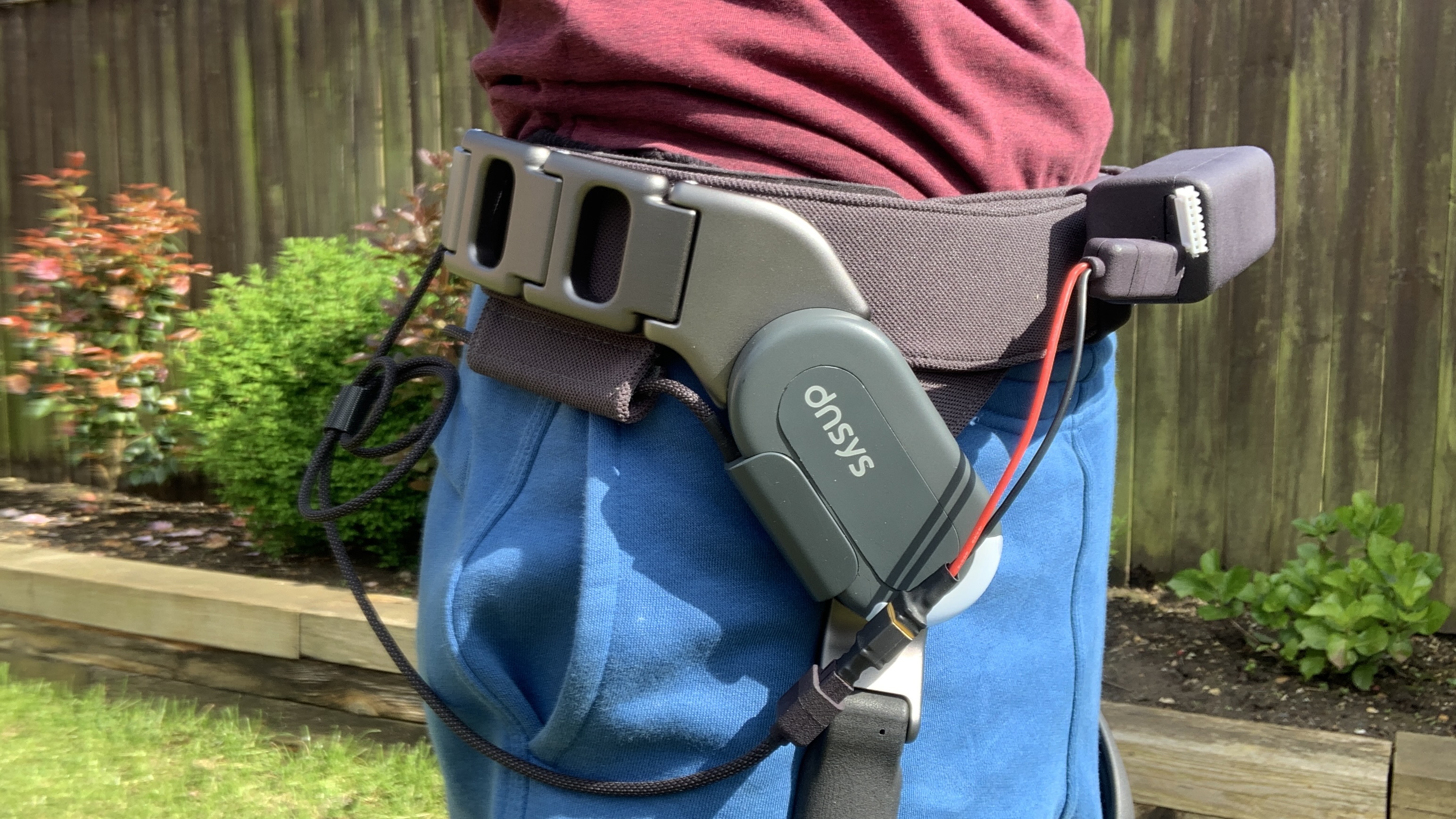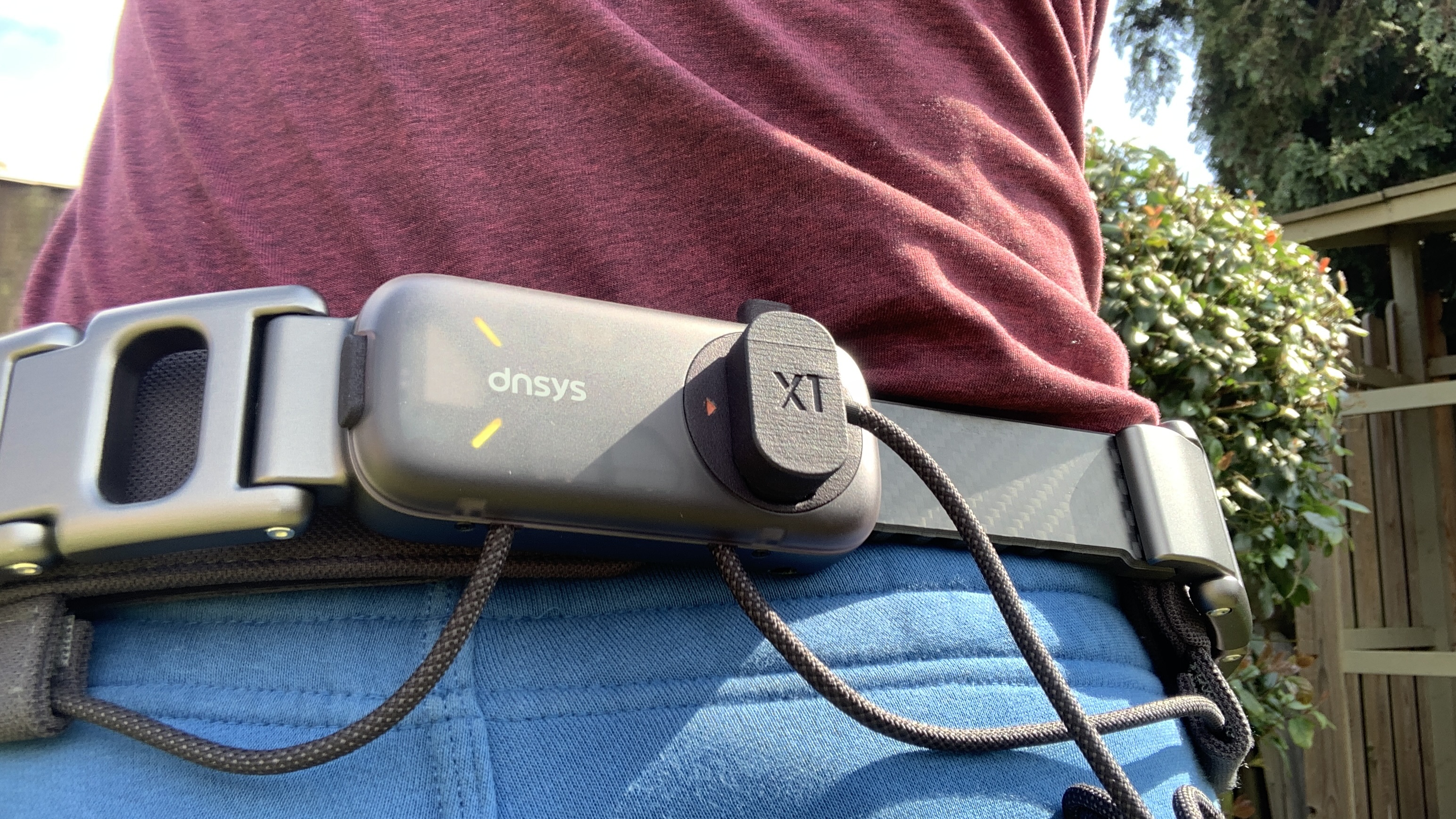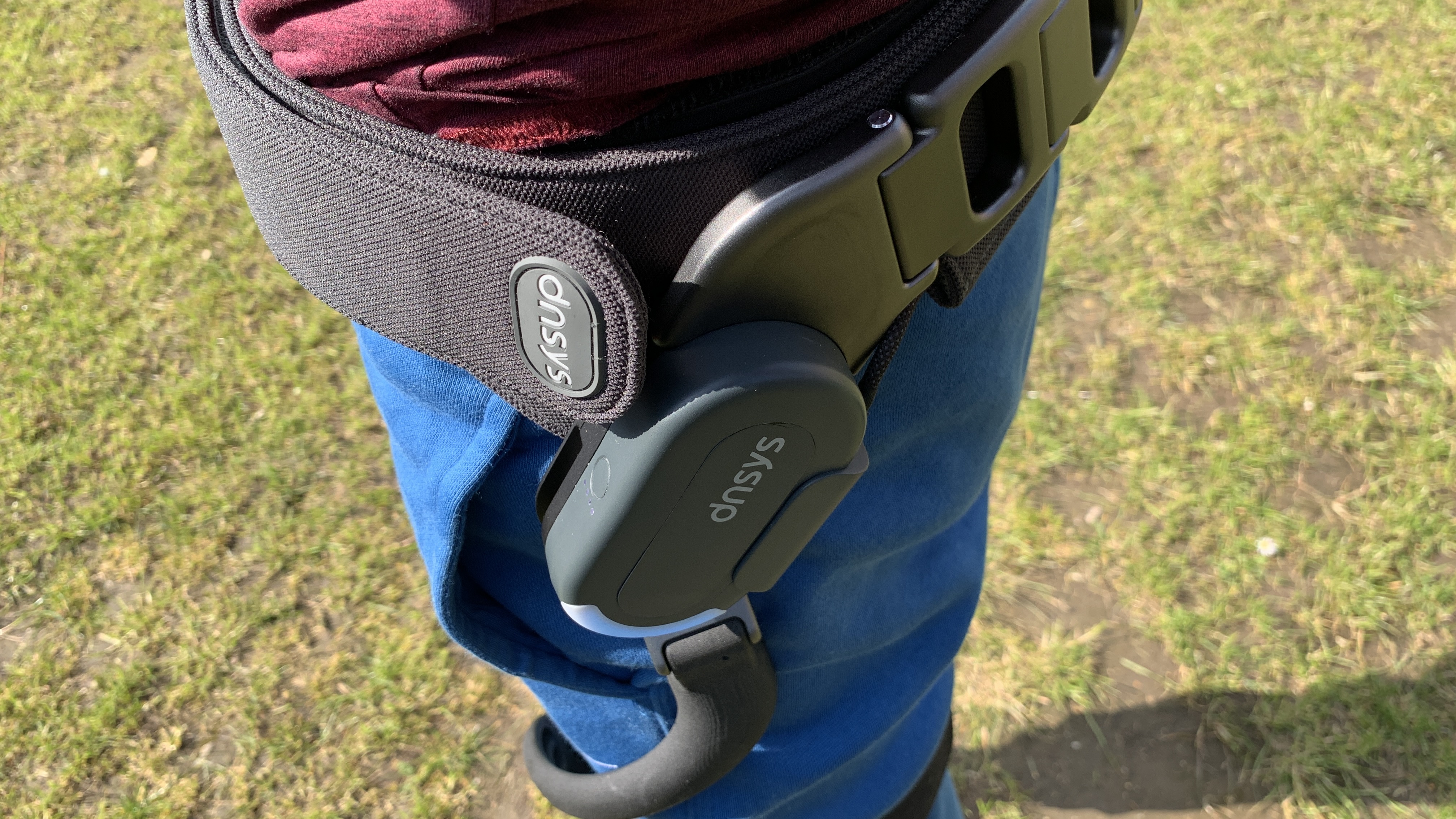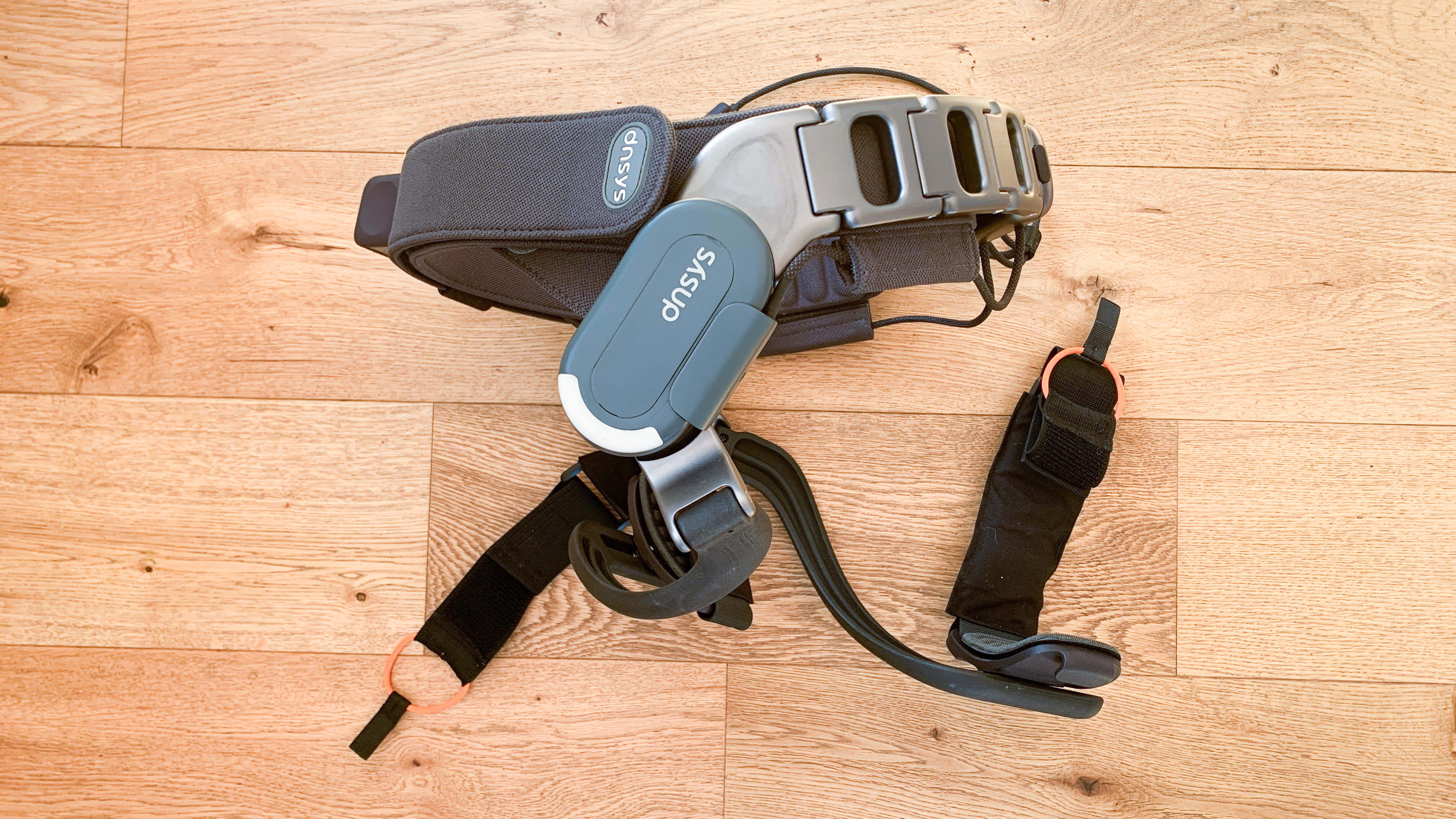I tried this Iron Man-style exoskeleton for a day, and it's so good I'll keep using it
I tried the Dnsys X1 exoskeleton to see if it could help me overcome my knee problems

Ever since watching the first Iron Man film in 2008, I’ve wanted to supercharge my own body, but I never thought the day would come when I finally got the opportunity.
Okay, you’ll need to manage your expectations if you think this device is a full-on flying suit, but when I put on the Dnsys (pronounced like Genesis) X1, I imagine I felt the same buzz that Tony Stark must have felt when he got his Mark I Iron Man armor fully functional.
When Dnsys told me it was sending me its exoskeleton, I immediately thought this was going to solve not only my exercise problems but also help me overcome the limitations of a knee injury that’s plagued me for 10 years. It was therefore with great excitement that I received the package and proceeded to unpack it.
It's a wearable unlike anything I've tried before: it's not the same as the best smartwatches or best running watches, or other training aids. It belongs in the same category as the Humane AI Pin, and jetpacks, as "silly futuristic tech we can't believe is already here".

Dnsys X1 exoskeleton: At a glance
- What is it? An exoskeleton designed to remove or add up to 38 kgs of resistance to your steps.
- Who is it for? High-tech hikers, people in rehab, those interested in unconventional resistance training.
- How much does it cost? Once the Kickstarter is over, it will retail at $1,198 (around £950 in the UK / AU$1,800 in Australia)
Build and design
The futuristic smart power exoskeleton immediately looked the part. It all came fully constructed with a battery installed, so I could start wearing it right away. The combination of metal and fabric support provided the necessary rigidity and flexibility to make it comfortable to wear, while not gripping on too tightly.
I proceeded to put the exoskeleton on, with the slight trepidation that it might take over and leave me unable to control my movements. In reality, it’s not that strong and will largely work by aiding your movements, rather than generating them for you.
The belt is attached using strong velcro patches that keep it firmly around the waist. The two leg plates clip around the legs with elasticated chords. These fit comfortably and were incredibly easy to install. For such a complex piece of kit, I was pleasantly surprised at how easy it was to put it on.
Sign up for breaking news, reviews, opinion, top tech deals, and more.
One downside was the positioning of the power button at the rear, which seemed like a very strange decision to me. I could access it without too much trouble, but not being able to see it made it feel a little unnatural. Putting this on the front, or even on the side, would have made more sense to me.

Operating the exoskeleton
With the belt and plates firmly located, I set about turning on the Assist mode. The instructions are really straightforward and ideal for an English-speaking audience. That being said, I found operating the device a bit clunky and unpredictable. Entering assist mode required a double click of the power button, but it would only seem to be successful if I stood absolutely still.
Much of this may have been user error, but a slightly simpler button layout and setup would have been better, in my opinion. Moving the power button to the side and having separate buttons for entering assist mode and workout mode would have been simpler for me. These two modes are highlighted with different colored LEDs, but you’ve got to remember which light refers to which mode. After a while, I got used to it, but for a beginner, it felt like hard work.

Assist mode
Once I finally entered Assist mode, which is said to reduce the load on your legs by up to 38 kilograms, I started running. First around the house and then outside. I tried moving in straight lines, round corners, and even up the stairs. I looked pretty silly, but that’s just something you have to get over if you want to enjoy the benefits of something like this. Everyone stared, which I suppose is how Robocop felt when enforcing the law.
As and when these types of assistance devices become more prevalent, there will be a lot less staring, I expect. Understandably, people are just interested and intrigued. They have questions, and you’re the one wearing the device, so it’s your job to answer them. One day the staring will fade, and users of exoskeletons will, no doubt, feel a lot more free. If exoskeleton manufacturers can find a way to hide these more easily underneath clothing, then that could be a good step forward.
Once I got going, I found the Assist mode to be incredibly helpful. I could feel it pulling my legs up as I took each step, and it noticeably felt easier to run around. I still had to put in a fair amount of effort, but it certainly helped provide that extra 15% that you might need to get up a hill, for example. Great for hiking.
Think of it like one of the best electric bikes, with a motor that kicks in when you pedal. It doesn’t do all the work for you, but it certainly helps when you’ve got a hill to get up that’s slightly beyond you physically.
The unit itself is fairly noisy, with a robotic sound accompanying every rotation of the exoskeleton. I did enjoy walking around the house chasing my son like I was a robot out of control, and the noise coming from the machine helped sell the experience for both of us.

Resistance mode
As well as Assist mode, the X1 provides Resistance mode, which is a workout alternative that adds resistance rather than taking it away. To have both modes is incredibly helpful, as it provides an extra level of functionality that will appeal to a wider audience. Perhaps those who are in physical rehabilitation, or just want to build up their leg muscles in futuristic fashion rather than heading to the gym, will benefit here, but it's not the main attraction.
There’s no control over the amount of resistance, but maybe that’ll come in X2. The resistance performs well, and at no point did I think I was going to break it.

When will everyone be wearing these?
Not very soon, I imagine. Even though the Dnsys Kickstarter campaign has been overwhelmingly positive, raising almost $579,000 at time of writing, the premium price of the exoskeleton will make people think twice before buying.
As with any new technology, you’ll certainly get early adopters, and that will help get the industry moving. Dnsys is doing a great thing, and I hope they succeed in bringing more exoskeleton products to the market.
I'll keep using the X1, hoping that in the long term, it helps me limit the strain on my knee, and therefore extend the length of my runs. I imagine X2 will have rocket boosters and be able to fire projectiles: at that point, the neighbors will really have something to stare at.
You might also like:

Paul is a digital expert. In the 20 years since he graduated with a first-class honours degree in Computer Science, Paul has been actively involved in a variety of different tech and creative industries that make him the go-to guy for reviews, opinion pieces, and featured articles. With a particular love of all things visual, including photography, videography, and 3D visualisation Paul is never far from a camera or other piece of tech that gets his creative juices going. You'll also find his writing in other places, including Creative Bloq, Digital Camera World, and 3D World Magazine.